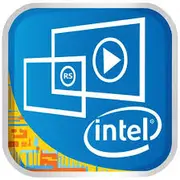Intel Core M-5Y70

Intel Core M-5Y70 in 2025: Is it worth buying a laptop with this processor?
Introduction: Ultra-Mobility as a Priority
The Intel Core M-5Y70, released in 2014–2015, became a symbol of the ultrabook era. Its key feature is minimal power consumption (TDP of 4.5 W) and passive cooling. But, a decade later, in 2025, should one consider devices on this platform? Let's delve into the details.
Architecture and Technology Process: Compactness at the Expense of Power
Broadwell Features
The processor is built on the Broadwell microarchitecture (5th generation Intel Core) with a 14 nm technology process. This was the first stage of evolution where Intel focused on reducing TDP for ultra-portable devices.
- Cores and Threads: 2 cores, 4 threads (Hyper-Threading). Base frequency is 1.1 GHz, turbo mode up to 2.6 GHz.
- Graphics: Intel HD Graphics 5300 (24 EU, frequency 100–800 MHz). Supports 4K via DisplayPort.
- Cache: L3 — 4 MB.
What does this mean? Even at the time of its release, the Core M-5Y70 was not aimed at high performance. Its task was to handle basic tasks without active cooling.
Power Consumption and TDP: Silence and Autonomy
TDP 4.5 W: Pros and Cons
Such a low thermal design power allowed for the creation of fanless laptops. For instance, models like the Lenovo Yoga 3 Pro or the Apple MacBook 12" (2015) adopted a similar approach.
- Advantages:
- Complete silence.
- Reduced weight and thickness of the chassis.
- Disadvantages:
- Performance limitations under prolonged loads (throttling).
Important: In 2025, the TDP of modern processors, such as the Intel Core i5-1230U (9 W) or Apple M2 (20 W), is higher, but their efficiency far exceeds that of the Core M-5Y70.
Performance: What Can the Core M-5Y70 Do in 2025?
Real-World Use Cases
- Office Tasks:
- Document editing (Word, Excel), browsing (5-10 tabs) — acceptable, but possible slowdowns when launching background applications.
- Video calls (Zoom, Teams) — sufficient for basic quality, but without background filters.
- Multimedia:
- Streaming 4K (YouTube, Netflix) — handles it thanks to hardware decoding.
- Photo editing (Lightroom) — just for light corrections.
- Gaming:
- Older games (Half-Life 2, Minecraft at low settings) — 20-30 FPS.
- Modern titles — not recommended.
Turbo Boost Mode: Under brief loads, the frequency can rise to 2.6 GHz, but throttling starts within 1-2 minutes. For instance, video rendering in Handbrake would take 3-4 times longer than on a 12th generation Core i5.
Use Cases: Who Is the Core M-5Y70 Suitable For?
Ideal Audience
- Students: For lectures, note-taking, PDF work.
- Travelers: Lightweight laptop (1-1.3 kg) with 8-10 hours of battery life.
- Secondary Devices: As a complement to a primary PC for on-the-go tasks.
Not Suitable:
- Gamers and video editors.
- Users of heavy IDEs (Android Studio, Unity).
Example: A Dell XPS 13 (2015) with Core M-5Y70 can be found on refurbished marketplaces for $150–200. However, devices based on Intel N100 (2023) that are twice as powerful are available for $300–400.
Battery Life: How Long Will It Last?
Power-Saving Technologies
- Intel SpeedShift: Dynamic frequency management for quick transitions to low-power mode.
- C-States: Shutting down unused cores.
In Practice:
- Web surfing — 7-9 hours (40–50 Wh battery).
- Video playback — up to 6 hours.
Tip: In 2025, batteries in such devices are often worn out. Check the battery status before purchasing.
Comparison with Competitors: What Was and What Is
2015 Alternatives
- Intel Core i5-5200U (Broadwell, 15 W): 30-40% faster in multi-threaded tasks, but requires active cooling.
- AMD A6-8500P (Carrizo-L, 15 W): Weaker in single-threaded tests, but better graphics.
Modern Alternatives (2025)
- Intel Processor N100 (Alder Lake-N, 6 W): 4 cores, 3.4 GHz, TDP of 6 W. 2-3 times faster than Core M-5Y70.
- Apple M1 (2020): Single-threaded performance is 3 times higher, multi-threaded performance is 6 times higher.
Conclusion: The Core M-5Y70 is outdated even for basic tasks. Its justified niche is ultra-budget devices.
Pros and Cons: Balancing Capabilities
Strengths
- Silence and compactness.
- Support for 4K video.
- Low price on the second-hand market.
Weaknesses
- Low CPU and GPU performance.
- Throttling under load.
- Lack of support for modern standards (USB-C with Thunderbolt 4, Wi-Fi 6E).
Recommendations for Choosing a Laptop
What to Look For in 2025?
1. Device Type: Ultrabook or 2-in-1 convertible. Avoid gaming and workstation models.
2. RAM: Minimum of 8 GB. Models with 4 GB (e.g., Asus UX305FA) are already unsuitable for Windows 11.
3. Storage: Only SSD. HDDs will slow down even basic tasks.
4. Price: Don't overpay. New budget laptops (like the HP Pavilion Aero 13 with Ryzen 5 7530U) cost $500–600 and offer modern technology.
Example of a Bad Choice: Buying a used MacBook 12" (2015) for $250. It's better to add $100 and get a refurbished iPad 9 + keyboard.
Final Conclusion: Who Is the Core M-5Y70 For?
This processor is a choice for those needing:
- An ultra-cheap laptop for text and internet usage.
- A passive cooling device for working quietly.
- A backup gadget for travel.
Key Benefits in 2025:
- Price below $200.
- Time-tested reliability (if the battery has been replaced).
Limitations:
- Not suitable for modern OS with high requirements (Windows 11, macOS Sonoma).
Conclusion: Nostalgia or Rationality?
The Intel Core M-5Y70 is a relic of the ultrabook era, relevant in 2025 only in exceptional cases. If your budget is strictly limited and your tasks minimal, it can be considered. However, for comfortable work, it's better to choose modern processors, even in the budget segment. Technology does not stand still, and today, for $300–400, one can obtain a device that outperforms the Core M-5Y70 in all aspects.
Basic
CPU Specifications
Memory Specifications
GPU Specifications
Miscellaneous
Benchmarks
Compared to Other CPU
Share in social media
Or Link To Us
<a href="https://cputronic.com/cpu/intel-core-m-5y70" target="_blank">Intel Core M-5Y70</a>